Balance — your ability to stay upright without falling — is an essential physical and mental skill. And yet, it’s an often-overlooked aspect of fitness for individuals at every level.
No matter your age or your goals — whether you want to run, ski, hike, cycle, lift, or simply be able to carry your groceries into the house — balance training can help you perform better, stave off injury, and enjoy a higher quality of life in the long run.
“Balance training is important because virtually all movement and physical activity requires some degree of stability,” says Cedric X. Bryant, PhD, FACSM, president and chief science officer of the American Council on Exercise.
By performing balance-training exercises, you can improve your strength, body awareness, reaction time, and coordination while also increasing resilience to injury.
Additionally, balance training can benefit cognition, spatial awareness (awareness of your body’s position to objects in your environment), and proprioception (awareness of your body’s movements, force, and location), says Abrea Wooten, senior national education manager at Life Time.
While there’s no age limit on these benefits, “balance is especially important for older individuals because it typically declines as we age, making us less stable on our feet and more vulnerable to falling,” Wooten explains.
Whether you’re a mountain biker traversing tree roots and rocks or a neighborhood walker looking out for pavement cracks and ice, balance training in a controlled setting can improve your ability to navigate your way around these and other obstacles.
Balance work doesn’t have to be complicated or time-consuming. In fact, it can be incorporated into your daily life as well as into your existing workouts.
Many health clubs and gyms offer balance-enhancing programming. Life Time, for instance, has specifically integrated unstable-surface training into a variety of its offerings, including its high-intensity Ultra Fit classes and its ARORA training designed for 55-plus exercisers.
Most fitness centers and gyms boast unstable-surface tools (USTs), including the following four popular options. Discover how you can add some balance work into your routine with their support.
Airex Balance-Pad
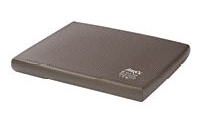 A soft square made of dense foam, the pad activates your feet, ankles, legs, and core to maintain a standing posture. The spongy UST is useful for creating an unstable surface close to the ground, making it ideal for balance-training beginners.
A soft square made of dense foam, the pad activates your feet, ankles, legs, and core to maintain a standing posture. The spongy UST is useful for creating an unstable surface close to the ground, making it ideal for balance-training beginners.
To start, stand with both feet planted firmly on the pad. Progress to standing on one leg, closing one eye or both, rotating your head, and moving your arms, suggests Katy Moline, MS, ACSM-EP.
For a particularly challenging — but fun — exercise, stand on one foot and use the other foot to try to write the letters of the alphabet or spell out your name or other words. Make the motions as big or as small as you can control, then progress from there.
BOSU Ball
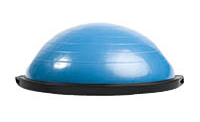 Like a stability ball cut in half, a BOSU consists of an inflated rubber dome attached to a rigid platform. This tool is ubiquitous in many clubs and gyms due to its balance-boosting benefits.
Like a stability ball cut in half, a BOSU consists of an inflated rubber dome attached to a rigid platform. This tool is ubiquitous in many clubs and gyms due to its balance-boosting benefits.
One way to use the BOSU is as prep work for strength exercises, says Wooten. Just be sure that before you bring the BOSU into play, you’re able to perform all moves on a stable surface with a full range of motion.
For instance, practice doing sets of squats, lunges, overhead presses, planks, and other strength moves on the floor. Once you get the hang of the motion and form, increase the challenge by performing your move of choice on the domed side of the BOSU ball. Allow yourself time to progress slowly — and position yourself near a wall or other stable surface for safety.
Rocker and Wobble Boards
 The names are sometimes used interchangeably, but there is a difference between rocker and wobble boards. Rocker boards, like StrongTek’s version pictured here, are rectangular or curved U-shaped boards that allow you to move from side to side and front to back. Wobble boards are round boards that allow you to move from side to side, front to back, and in a circle (“around the world”). Both variations are awesome for building balance skills.
The names are sometimes used interchangeably, but there is a difference between rocker and wobble boards. Rocker boards, like StrongTek’s version pictured here, are rectangular or curved U-shaped boards that allow you to move from side to side and front to back. Wobble boards are round boards that allow you to move from side to side, front to back, and in a circle (“around the world”). Both variations are awesome for building balance skills.
“Even just getting on these is fun,” says Wooten. Try performing such lower- and upper-body exercises as squats, biceps curls, overhead triceps extensions, and standing biceps curls. You can also do planks to improve abdominal strength by putting your feet on the board, lifting one arm at a time, and then lifting one leg at a time.
Power Plate
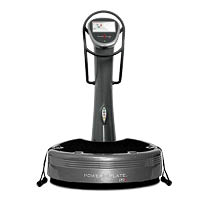 The Power Plate constantly challenges balance by sending multidirectional vibrations through your body as you’re performing your workout. “The vibration isn’t going to be so crazy that it throws you off your game,” says Wooten, “but the connections it can make neurologically, along with extra muscle recruitment, are fantastic. So anything you’re doing on the floor” — squats, lunges, plank holds, rows — “you can take onto the Power Plate.”
The Power Plate constantly challenges balance by sending multidirectional vibrations through your body as you’re performing your workout. “The vibration isn’t going to be so crazy that it throws you off your game,” says Wooten, “but the connections it can make neurologically, along with extra muscle recruitment, are fantastic. So anything you’re doing on the floor” — squats, lunges, plank holds, rows — “you can take onto the Power Plate.”
The Power Plate isn’t the most challenging UST on this list, but it can be the most intimidating simply because it is a large machine that people may not know how to operate. If your health club has one and you’re unsure how to use it, don’t hesitate to ask a trainer.
On Solid Ground
You can practice balance training without the help of USTs.
“There’s an infinite number of exercises that can be done to improve balance without a single piece of equipment,” says Katy Moline, MS, ACSM-EP, who teaches balance classes to older adults.
Moline advises integrating balance training into your daily routine using no more than your own body.
For starters, anytime you have to stand — while, say, brushing your teeth, washing the dishes, waiting in a line, or working at a standing desk — switch up your stance. Stand on one leg or use a staggered stance with one foot slightly in front of the other. Take this to a tandem stance, where one foot is directly in front of the other, as if you were balancing on a tightrope. Progress by raising and lowering the heels or by closing one eye at a time.
Set your balance work in motion by mixing up how you walk. Take slow steps forward and backward, holding one leg up before each step (walking or jogging in reverse improves stability, balance, coordination, and cognitive function. For more, see “The Benefits of Backward Walking.” Move side to side while imagining that you’re stepping over a sleeping pet.
“It’s important to work on balance while standing still and while moving, as well as in different directions — forward and back, side to side — and tempos,” Moline says.
Life Time’s Abrea Wooten agrees. “We live in 360 degrees, and life comes at us from all angles and speeds.”
This article originally appeared as “Wobble Work.”
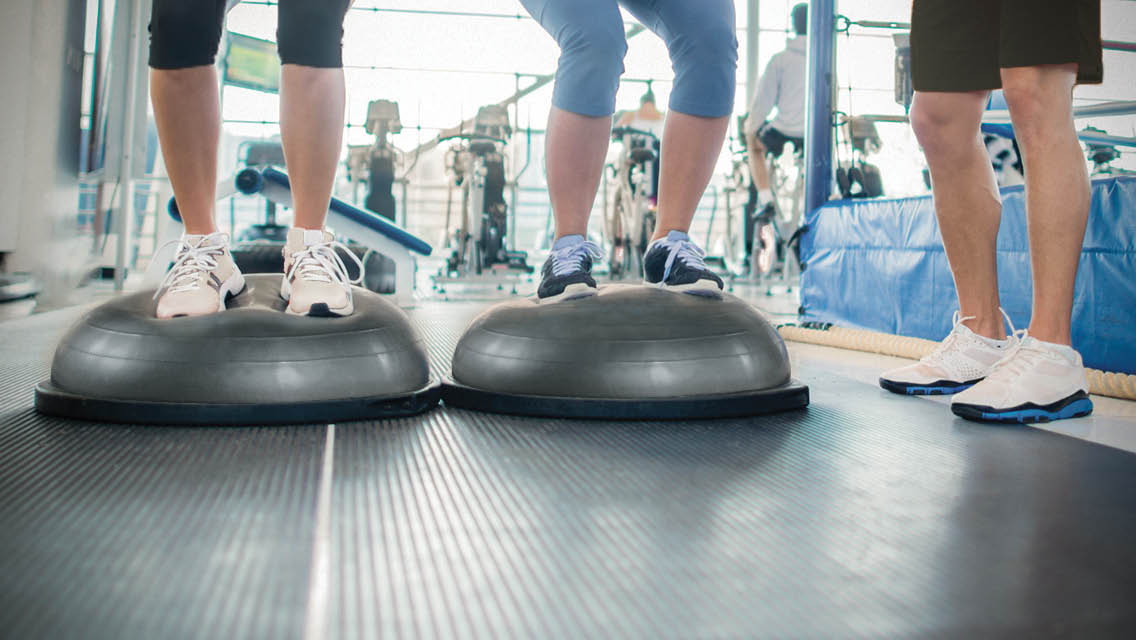

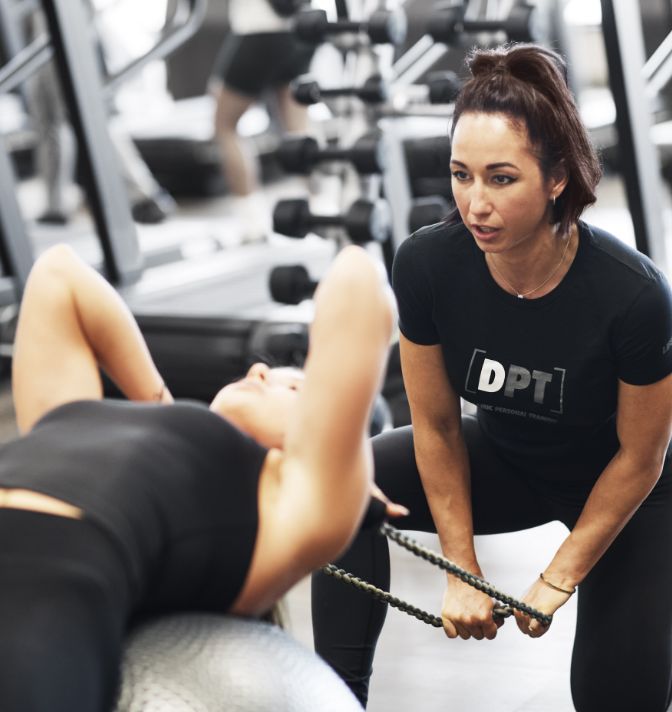

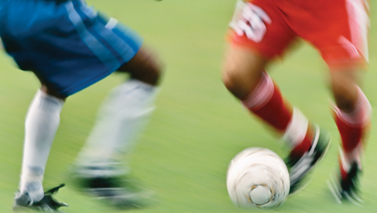
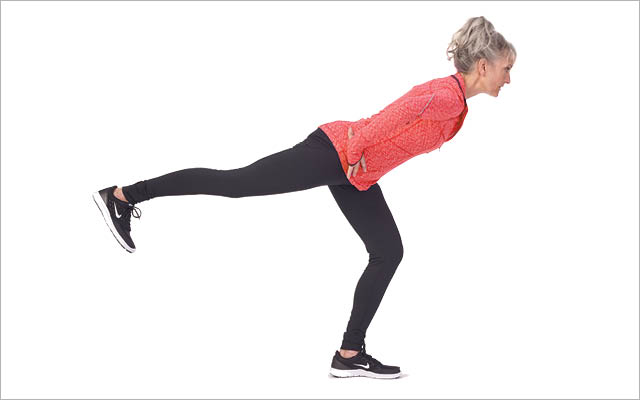
This Post Has 0 Comments